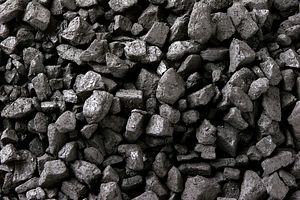Responding to North Korea’s second nuclear test within one year in September, the United Nations adopted a new sanctions package on Wednesday November 30. These are some of the main points:
- By far, the most significant measure is a “cap” on imports of North Korean coal at $400 million or 7.5 million metric tons in a year, cutting the country’s revenues by about $700 million per year. This is to supplement the current provision that coal can be imported when the proceeds go to livelihood purposes in North Korea, a provision that (unsurprisingly) has proven to be a massive loophole.
- Four more minerals have been added to the sanctions list: copper, nickel, silver, and zinc.
- Exports of statues have been banned, targeting the somewhat peculiar North Korean practice of building statues in various African countries.
- The resolution also limits the number of staff allowed at North Korean diplomatic missions, and forbids them from opening more than one bank account per person.
So what does this mean for the North Korean economy? Obviously, one shouldn’t speculate too much in advance. As always, China’s enforcement will be the main determinant. That said, here are some things worth noting:
First, while $400 million cap on coal exports would certainly be a significant loss of income for the North Korean regime, it might not be disastrous. It is worth remembering that North Korean government revenue from minerals exports already fluctuates heavily along with market prices. Just for a sense of perspective, in 2015, North Korea’s export income stood at about $3 billion, representing a 16.4 percent decrease from the preceding year. Moreover, the claim of a $700 million revenue cut does not take into account the extent to which North Korea could make up for the loss through other sectors. In 2014, textile exports to China alone brought in around $800 million.
Second, the likelihood of full and consistent Chinese sanctions enforcement remains fairly low at best. Historically, we have seen a pattern where China will increase enforcement during certain time periods, or take single measures that receive a lot of attention (such as the Hongxiang inquiry) but where trade with North Korea returns to normal pretty quickly. Case-in-point: the unusually strong sanctions from earlier this year, and the promises of Chinese enforcement, ended with record trade in coal. Obviously the “livelihoods” exemption provided a large enough loophole, particularly after the announcement by the United States and ROK that the Terminal High Altitude Area Defense (THAAD) anti-missile system will be deployed in South Korea. It is difficult to see why this coal cap would be impossible to circumvent. After all, China is (presumably) responsible for gather the data and for ringing the alarm bells when said cap is reached. (See also Adam Cathcart’s essay on the recent Sino-North Korean rapprochement at Sino-NK).
Third, and relatedly, history tells us that many, many factors other than the international sanctions regime determine Chinese imports of North Korean coal. Domestic demand is arguably far more important as a determinant than sanctions, as evident by the fact that declines in imports of North Korean coal often fluctuate much more with demand than with sanctions.
As always, we can only wait and see, but at the face of it, these new sanctions seem far from revolutionary.
Benjamin Katzeff Silberstein is the co-editor of North Korean Economy Watch. He is a PhD Student in History at the University of Pennsylvania and a non-resident Kelly Fellow at Pacific Forum CSIS.
This post was originally published by North Korean Economy Watch and appears with kind permission.

































